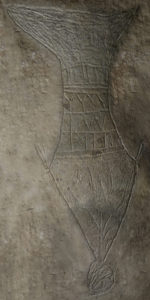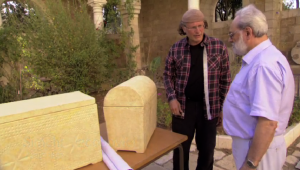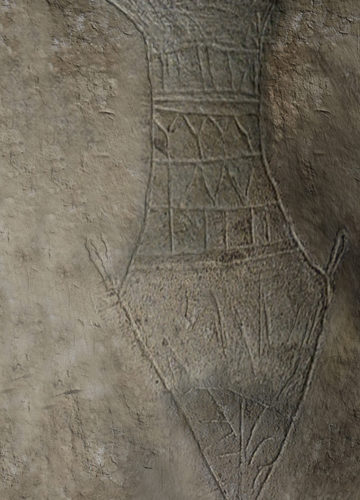Jesus Tomb Finds Dramatic Support
 I think everyone would agree that if Jesus’ tomb was found this would be, perhaps, the greatest archaeological discovery of all time. Imagine if in this tomb there were also other members of his family and loved ones, including his mother Mary and Mary Magdalene. Wouldn’t that be something? The world would be in awe, the story would dominate headlines for years. But maybe not.
I think everyone would agree that if Jesus’ tomb was found this would be, perhaps, the greatest archaeological discovery of all time. Imagine if in this tomb there were also other members of his family and loved ones, including his mother Mary and Mary Magdalene. Wouldn’t that be something? The world would be in awe, the story would dominate headlines for years. But maybe not.
In his classic novel “The Brothers Karamazov” (1879-1880), Fyodor Dostoyevsky tells us, in prescient fashion, the parable of “The Grand Inquisitor”. In the story, Jesus comes back to earth at the time of the Spanish Inquisition. After performing a number of miracles, he is arrested by the Church and sentenced to burn at the stake. The Grand Inquisitor then visits Jesus in his cell and tells him that the Church no longer needs him. He proceeds to explain why Jesus’ return interferes with the theology of the Church. By the end, the Inquisitor releases Jesus who disappears into the dark alleys of the town. This is more or less what happened when Jesus’ tomb was recently discovered in Jerusalem. The story was covered up and the findings were dismissed. But now, something dramatic has occurred which may pull the discovery out of the shadows and place it in the arena of public debate where it belongs.
The tale begins in 1980 when a bulldozer crashed into a tomb in east Talpiot, a suburb of Jerusalem. In the tomb there were ten ossuaries, or 1st century limestone “bone boxes”. Six of them have inscriptions. One of them explicitly states; “Jesus, son of Joseph”. Another has “Maria” scratched onto its surface. A third has “Yose”, a very rare version of Joseph. “Yose”, “Joses” in the King James version of the Gospels, is described as a “brother of Jesus” by the Gospels of Mark (6:3) and Matthew (13:55-56). If this is not enough, there is also an inscription in Greek of a certain Mary called “Mariamene”. In all of Greek literature, this particular spelling of Mary is used in reference to Mary Magdalene and no one else. You would think that this discovery would have raised some eyebrows. Instead, one of the ossuaries was “lost” and the others were filed away in the bowels of the Israeli government’s Antiquities Authority (IAA) warehouse. The find was not mentioned for 16 years.
In 1996, when the BBC started sniffing around the story Professor Amos Kloner, then of the IAA, suddenly remembered the tomb. He published a small article in an obscure journal stating that the names found on the ossuaries were “common” in Judea at the time of Jesus and, therefore, don’t mean anything. The BBC backed off the story and the discovery continued to languish in the shadows until 2007 when I brought it to light in a documentary and a book. The story grabbed headlines worldwide but, within days, it disappeared.
The overwhelming majority of academics were quiet on the subject, but an army of “grand inquisitors” came out to denounce everything and anything to do with the discovery. 26 years of silence on the subject was good, they said. Publicizing the story was “sensationalistic”. The authoritative reading of the Mariamene ossuary, they said, was wrong all along. The lack of testing of anything in the tomb was “responsible”, they said, because there was nothing unusual about this burial cave. The naysayers were successful and the story died. I remember going through customs at Kennedy when the customs officer suddenly recognized me; “you’re the one who made the big deal about the Jesus tomb,” he said. “It turned out to be nothing,” he concluded. “Why do you say that?” I asked. “Because if it was really Jesus’ tomb I would be hearing about it all the time,” was the logical answer.
At the end of the day, the major criticism against my colleagues and I was that, statistically, the finding didn’t mean anything because there were lots of “Jesus’” and lots of “Mary’s” living in 1st century Jerusalem. Nevermind that Professor Andrey Feuerverger said that the odds were 600:1 in favour of the tomb belonging to Jesus. To refute this, the naysayers quoted Professor Camil Fuchs of Tel Aviv University. But Professor Fuchs said that the odds were “50/50”. At 50/50 you would think that an army of academics would have descended on Talpiot. Even if there was a 1% chance you would think that the world would want to know the truth. But no one came.
Now something has happened that changes everything.
In 2010, an archaeological dig under the direction of Professors Rami Arav and James Tabor, took place at a tomb 60 meters from the alleged Jesus family tomb. The idea was to look into the tomb next to the controversial tomb to see whether there were any findings that might throw light on the burial chamber of the man called “Jesus, son of Joseph”. The investigation was not simple. The second tomb remains sealed under a modern apartment building. Besides, religious activists in Jerusalem oppose any excavation that might “disturb the dead”. So the excavators had to get in without getting in. A robotic arm was built outfitted with remote cameras and inserted into the tomb. The images that were flashed back included a cross carved on an ossuary, the only statement of resurrection faith ever found in a 1st century Jerusalem tomb, and an image of a fish vomiting out a stick man with the word “Jonah”, “Yonah” in Hebrew, carved across the fish’s head. For those who don’t know the “Sign of Jonah” was the most popular biblical symbol for Jesus’ followers. It appears 128 times in the catacombs of Rome, dated to the 3rd and 4th centuries. It is mentioned in the Gospels themselves (Matthew 12:38 and Luke 11:30) and is the “only” sign Jesus is recorded to have given to his disciples. According to the early Christians, it was a symbol of resurrection. They argued that just as Jonah was three days in the belly of the fish, and was then returned to life, so to Jesus was three days in the belly of the tomb, and was then resurrected. The discoveries were revealed in my film “Resurrection Tomb” and a book I co-wrote with Professor James Tabor, “The Jesus Discovery”.
The naysayers understood that finding the earliest signs of Christianity – dated to the time of Jesus himself – is an archaeological smoking gun that proves that the man buried only 60 meters away was not some other Jesus but the Jesus. So they came out in force and they said that the cross is not a cross but a door, the resurrection statement is not a resurrection statement but a warning against touching the deceased’s bones and, most importantly, the “Sign of Jonah” is not a symbol at all. The stick man is just a bunch of scratches, and the inscription is simply not there. The big fish is nothing more than an amphora i.e., a vase.
The fact is that the naysayers couldn’t agree among themselves on the image of the fish. First they said it was a “pillar”, then they said it was a “perfume bottle”, and only later did they settle on an “amphora”. Nevermind that any child can see that it’s a fish. The naysayers threw up such a cloud of dust arguing that “everyone” in the academic community has now decided that the fish is a vase, that no one noticed that some of the biggest experts in the world e.g., Professors Rami Arav, James Tabor and James Charlesworth were saying that the image on the ossuary in the second tomb was, indeed, the “Sign of Jonah”. Given all the personal attacks, many experts decided to express their opinions in a whisper and not in an article. For example, Dr. Yuval Baruch, head of the Jerusalem district for the IAA, says that the fish is not a vase, but no one is listening. Professor Rachel Hachlili, arguably the world’s number one expert on early Jewish art, also says that the fish image is the “Sign of Jonah”, but she refuses to get involved in the personal arguments. Now all this has changed.

One of the world’s most famous epigraphers, Professor Émile Puech of the École Biblique Archaeological Institute in Jerusalem, has gone public that the findings in the tomb next to the Jesus Family Tomb are, indeed, a cross and the “Sign of Jonah”. They are undoubtedly, he says, related to the early Jesus movement (see video interview below). For the record, Professor Puech is also a priest. He is also highly regarded by all those who have been critical of the “Jesus Family Tomb” theory.
Professor Puech is a very honest man. He was willing to be videotaped regarding his opinions. When I pointed out that his testimony can be used to corroborate the theory that Jesus’ tomb has been found in Talpiot, he responded by saying that Jesus’ tomb cannot, by definition, be found since Jesus has ascended to heaven. I respect this. Professor Puech does not try to defend his faith by altering the evidence and demonizing those who bring the evidence to light. On the one hand, he holds onto his faith, but on the other he reports on the evidence honestly and with no personal rancor. For those of us who are not motivated by Christian theology, however, Professor Puech’s scientific assessment is the smoking gun of the Jesus Family Tomb.
Put simply, it can no longer be argued that the “Jesus, son of Joseph” who was buried in Talpiot has no relation to Jesus of Nazareth. Given that the earliest signs of Christianity – 200 years earlier than the catacombs – have been discovered next to the burial place of a “Jesus, son of Joseph”, the identification of this Jesus with Jesus of Nazareth is certain.
What are the naysayers going to do now? Will they pressure Professor Puech to change his mind, as they have done with other scholars? Will they still maintain that no one supports the “Sign of Jonah”? Or will they simply ignore the story hoping, like the Grand Inquisitor, that Jesus and his tomb – and the remarkable archaeological evidence that was found in it – will once again recede into the shadows.
My colleagues and I will try to make sure that that doesn’t happen. Professor Puech’s expert testimony is a game changer.
Groundbreaking interview with Professor Puech:

